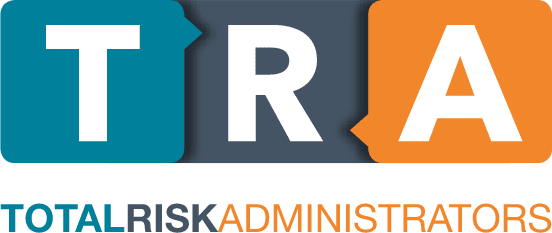Global Credit Rating (GCR) is Africa’s leading insurance rating system. It plays a vital role in the South African medical schemes industry. The GCR system is a relative and systematic rating using an analysis of the strengths and weaknesses of a company and the debt instruments issued by that business.
The GCR is useful for policyholders to consider the ratings of their medical aid and gap cover providers when becoming a member or to review the benefits of a possible medical scheme. GCR is a transparent language that reflects a business’s ability to repay and meet its financial obligations based on income and past repayment histories.
In essence, the higher the medical scheme’s credit rating is, the more likely the scheme will be able to pay your claims.
For example, a leading Gap Cover provider such as Total Risk Administrators not only boasts eight claims payment runs per month but is also securely backed by leading insurer; Auto&General. These are the desirable claims of security that individuals seek.
What does the credit rating of a medical scheme reflect?
The medical aid GCR rating considers all relevant information such as risk pool size and diversification, product pricing, benefit design etc. It considers whether the medical aid or medical scheme provider generates sufficient earnings and effectively manages its earnings volatility.
A positive global credit rating reflects that the medical scheme’s solvency is well-managed.
A good GCR credit rating shows that the company is likely to maintain a strong credit profile in the face of potential challenges. A poor credit rating is a clear warning as this may impact customers, prospective new clients, investors and lenders.
How does a gap cover or medical aid company receive these ratings?
GCR will consider membership base, product lines, asset management, financial performance, solvency and reserves and prospects in providing its rating for each entity.
Comparing medical aid schemes is notoriously difficult as each medical aid provider has many options. Each has its own benefit terms and limits, making like for like comparison impossible. Price versus Benefit discussion? Feel free to look at some comparisons of some of the leading Gap Cover products here.
Using the GCR credit rating provides a universal measuring tool and highlights the importance of a scheme’s solvency ratio and paying ability rather than its size. This allows potential members to make informed decisions when choosing the right medical aid to suit their needs and budget.
The GCR for different South African medical schemes:
It is vital to consider the Global Credit rating data when choosing a medical aid or gap cover provider. Not only does this provide a transparent measuring tool for similarity, but customers, investors and lenders also use it as a reassuring indication of a sound financial position.
South African medical aids are rated using national scale credit ratings. This allows for maximum differentiation between South African companies whilst maintaining a link to the global scale rating. National scale ratings reflect an ability of a medical scheme to meet a financial obligation within a specific country.
The implications of having a low GCR in South Africa:
The global credit rating is also used in marketing and significantly affects the sustainability of medical aid. In South Africa, medical aids with a low GCR credit rating are likely to be ranked as some of the worst medical aids in the country as opposed to companies with a highly regarded credit profile.
Along with the global credit rating, the agency attaches an outlook to a company which reflects the insurers ability to repay debts and pay claims. The outlook can be stable, under review or ‘positive watch’, which suggests a credit rating upgrade in the future.
Furthermore, poor outlooks include negative or ‘negative watch’ which indicates that the company’s ability to repay is deteriorating.
Being under negative watch greatly impacts an insurer as it is likely to underperform compared to competitors and will have to pay a higher interest rate to issue bonds or borrow money from a bank.
This increases the company’s risk of not paying claims.
South African medical aid schemes with high credit ratings:
The link between a company’s credit rating and the continuous success of the business is paramount. For example, medical insurers with high credit ratings have often been ranked as the best medical aids in South Africa. They have received a high strength rating on the national scale for South African medical aids – this is no coincidence.
The same can be said for Total Risk Administrators (TRA), who is proudly underwritten and backed by Auto&General. TRA is a medical gap provider that offers a wide range of reliable gap cover products.
Their products are designed to protect you against paying the difference between what your health specialist charges and what your medical aid pays for in-hospital claims.
Auto&General boasts an impressive credit rating and shows a sound level of risk-adjusted capitalisation underpinned by limited underwriting risk and conservative asset allocation. This makes TRA an impactful and valuable offering for all your gap cover needs.
Perhaps considering a medical Gap Cover scheme from TRA may benefit you.
Why is the sustainability of an administrator so important when choosing gap cover?
Medical aids with good GCR credit ratings are sustainable and equitable. Choosing a sustainable administrator is vital when selecting gap cover for the following reasons:
A good credit rating is a crucial part of staying in business.
- Good credit ratings indicate to potential shareholders and banks that the company can meet financial obligations and is financially stable.
The company is more likely to be able to pay claims.
- When a medical aid is financially stable, it can meet its commitment to its policyholders by having the funds to pay claims.
Global credit ratings indicate expectations of future performance.
- An unsustainable administrator may not be able to manage its earnings in the near future. The company’s ability to balance membership numbers, comprehensive benefits and maintain reasonable pricing will appear to be at risk. • This will diminish current members’ confidence and is likely to deter new members from joining the scheme. Therefore, the performance of the company is expected to worsen gradually.
Gap cover providers who are underwritten by insurers with good credit ratings are likely to regulate and monitor their providers.
- Companies like TRA, which are backed by insurers with a high global credit score, are likely to provide a consistent service offering that meets regulated industry standards and has the policyholders’ best interests at heart.
Considering downgrading your medical aid and upgrading your gap cover? Here’s why it’s a good idea:
It is always important to be mindful of closing the gap where your medical aid ends. Some medical procedures have shortfalls or a limited budget on your selected plan, or there may be a co-payment amount. Here, Gap cover bridges the shortfall and secures peace of mind.
As gap cover is a non-life insurance product, these too can be assessed using the GCR platform.
Some of the primary reasons for downgrading your medical aid and upgrading your gap cover include:
The increasing cost of private healthcare
- Due to the high demand for private healthcare in South Africa and the constant influx of new medical technology, the prices for these services continually increase. Therefore, the possibility of shortfalls in your medical expenses becomes greater as healthcare providers increase costs.
Cheaper monthly premiums whilst still protecting you and your family
- With the economy largely impacted by the pandemic and other global challenges, many people are downgrading their medical aid due to financial constraints which lower their cover. • By upgrading your gap cover and downgrading your medical aid, you can pay less for your monthly premiums whilst possibly still being sufficiently covered in case of an emergency.
Reducing the risk of financial debt after a medical emergency
- Downgrading your medical aid will mean that the percentage that your medical scheme is willing to pay will decrease. This increases your risk of higher shortfalls and potentially going into financial debt after a medical emergency. • Gap cover can protect you against this risk by covering shortfalls and reducing the financial burden incurred when you or a loved one becomes sick or injured.
*Kindly contact your financial advisor for detailed product information. That article does not constitute advice. Please follow the link to our terms and conditions: https://totalrisksa.co.za/downloads/TRA-GapCover-Terms-Conditions-Doc2022.pdf













